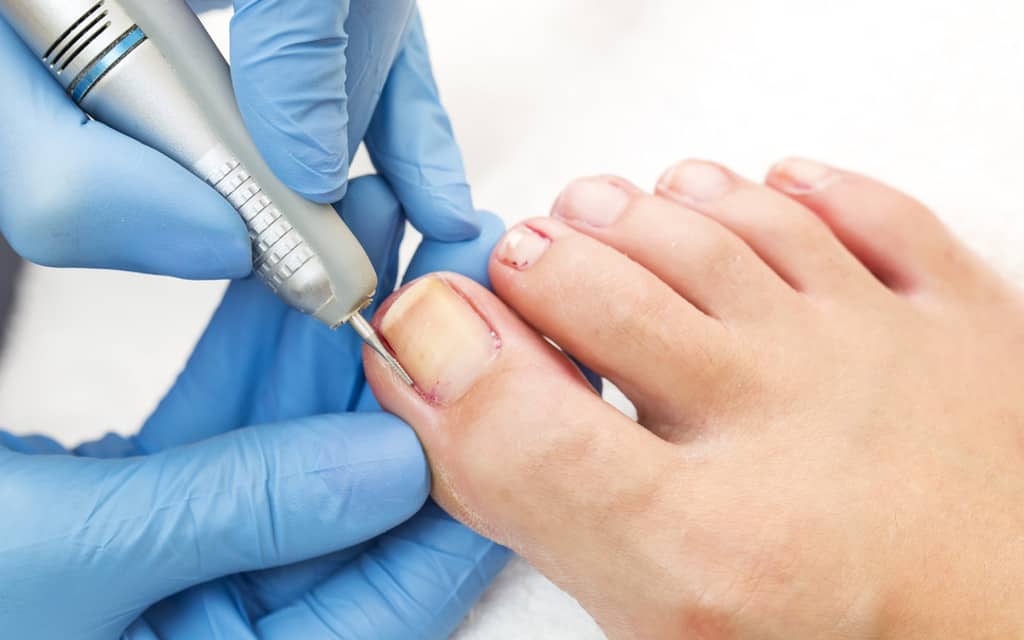Everything You Need to Know About Ingrown Toenails
An ingrown toenail is a common foot problem that can cause significant discomfort, swelling, and in some cases, infection. While it may seem like a minor issue, untreated ingrown toenails can lead to serious complications and affect your quality of life.
An ingrown toenail occurs when the edge or corner of the toenail grows into the surrounding skin instead of growing outward. This often causes pain, swelling, redness, and sometimes infection. While this condition can occur on any toe, the big toe is the most commonly affected. Ingrown toenails can range from mildly annoying to severely painful, and in more advanced cases, they may require medical intervention to prevent complications.
Causes of Ingrown Toenail
Several factors contribute to the development of ingrown toenails. Understanding these causes can help you take steps to avoid them in the future. Here are some of the most common causes of ingrown toenails:
Improper Nail Cutting
Cutting your toenails incorrectly is one of the leading causes of ingrown toenails. If you cut your nails too short or round the edges, the nail can grow into the surrounding skin as it regrows. This can irritate the skin and cause inflammation. To prevent this, always trim your nails straight across, leaving a small amount of nail beyond the edge of the toe. Avoid cutting the nails too short, as this can make the edges more likely to grow inward.
Tight or Ill-Fitting Footwear
Wearing shoes that are too tight or don’t provide enough room for your toes can put pressure on your toenails and force them to grow at an angle. High heels, pointy shoes, or shoes with narrow toe boxes can all increase the risk of developing an ingrown toenail. Tight socks or hosiery can also contribute to this problem. The pressure can push the nail into the skin, causing irritation and possibly leading to an ingrown toenail. To avoid this, make sure to wear comfortable, properly fitted shoes that allow your toes to move freely.
Trauma or Injury
Physical trauma or injury to the toe is another major cause of ingrown toenails. Dropping something heavy on your foot, stubbing your toe, or injuring the toe while playing sports can disrupt the nail’s growth and cause it to grow into the skin. In some cases, repetitive trauma can also contribute to the development of ingrown toenails. Taking care to protect your feet from injury and avoiding repetitive trauma will reduce your risk.
Genetic Factors
Some individuals are naturally more prone to ingrown toenails due to the shape of their toenails or the structure of their feet. If your toenails are curved or thickened, you may be more likely to experience ingrown nails. Additionally, inherited foot problems, such as flat feet or abnormally shaped toes, can contribute to the condition. If other members of your family have experienced ingrown toenails, you might have a higher risk.
Fungal Infections
Fungal infections, like athlete’s foot, can cause thickening or deformation of the toenails, which may increase the chances of developing an ingrown toenail. It often causes the toenail to become brittle or misshapen, which can make it more likely to push into the surrounding skin. If you notice any signs of a fungal infection, such as discoloration, thickening, or crumbling nails, it’s important to seek treatment as soon as possible.
Excessive Sweating
People who have excessively sweaty feet may be at an increased risk of developing ingrown toenails. Moisture softens the skin around the toenail, making it more vulnerable to irritation and infection. If your feet sweat a lot, it’s important to keep them clean and dry, especially between the toes, to avoid problems like ingrown nails.
Symptoms of an Ingrown Toenail
Ingrown toenails can range from mildly irritating to severely painful. The symptoms vary depending on the severity of the condition, but some common signs include:
Pain and Tenderness
One of the first signs of an ingrown toenail is pain, usually along the edge of the affected toenail. This pain can range from mild discomfort to intense throbbing, especially when you apply pressure to the toe or wear tight shoes. As the condition worsens, the pain can become more severe and persistent.
Redness and Swelling
The skin around the ingrown toenail becomes inflamed and may appear red. Swelling may occur as the tissue around the nail reacts to the irritation caused by the nail growing into the skin. In some cases, the swelling can become more pronounced if an infection develops.
Infection Symptoms
If an ingrown toenail becomes infected, you may notice pus, drainage, or a foul odor coming from the affected area. Infections can cause the toe to feel warm to the touch, and the skin may become more painful and tender. Fever and additional symptoms of illness can indicate that the infection has spread, in which case you should seek medical attention immediately.
Thickened or Deformed Nail
In some cases, you may notice that the toenail becomes thicker, discolored, or distorted. This can happen if the ingrown toenail has been left untreated for a long period, and the nail’s growth has been affected.
We are independent prescribers able to prescribe any medication from the BNF relevant to the lower limb, foot and ankle.
Are you suffering from any hand or foot condition? At The Chelsea Clinic, we can help. One of our podiatrist can assist and then recommend what treatments are best to get you back on track. Podiatrist South Kensington
Schedule an appointment here or you may call us at +44 (0) 207 101 4000.
We hope you have a feetastic day!
-The Chelsea Clinic and Team




